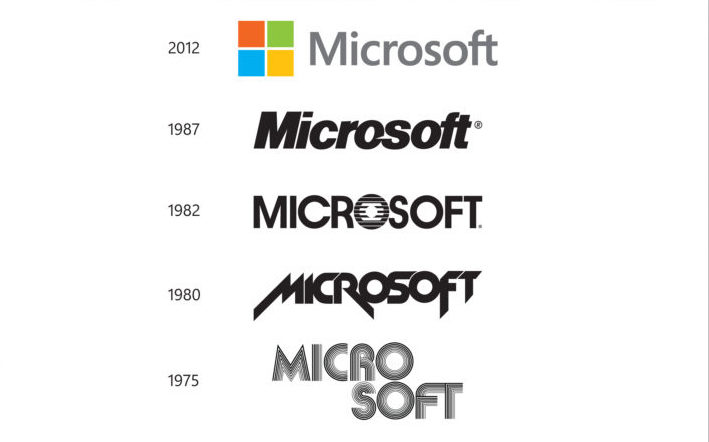
Where to Start Rebranding Your Company’s Identity
Oct 18, 2021
When business slows down, and other companies gain a competitive edge, it’s time to reevaluate and consider a brand refresh.
But what’s the process for rebranding your corporate identity? Let’s dive in.
Start By Examining Your Current Brand
Before moving any pixels, it’s helpful to take a long, hard look at where your business currently stands. Asking those tough, objective questions gets you closer to deciding which type of rebrand is necessary. It also helps you prioritize which of the brand’s visual elements to update first.
If you’re having trouble coming up with those questions, here are a few places to start.
- – What words come to mind when you think of your business?
- – Are those words accurate?
- – How does your brand compare to competitors in your space?
- – Are customers still coming in consistently?
- – Has the quality of those customers changed?
- – Do you believe your brand commands respect in the industry/market?
This list isn’t exhaustive, yet it exposes a few reasons why a rebrand is necessary, which include:
- – A loss of customers
- – Poor perception of the business
- – Misalignment of brand image and messaging with products/services
- – The need to reposition the company
- – Jumping into a new market
One way to uncover even more insight into the perception of your business is to conduct a brand audit. It provides a full picture of the strengths and weaknesses of your company in its positioning and how customers experience the brand.
Decide on a Brand Refresh or Overhaul
Of course, there’s a question of how far to go with the rebrand. Since there isn’t a “one-size-fits-all” approach to this, budget, strategy, and business goals can affect whether your brand gets a refresh or a complete overhaul.
Let’s go through the differences between the two.
A “refresh” is less extensive and retains the existing elements of the brand. It modernizes and builds on what you already have. Microsoft is an example of a corporation whose brand has been refreshed many times over the past 40 years. In 2012, the previously text-only version of the logo was updated to include a color representation of the company’s iconic Windows platform.

On the other hand, a brand overhaul means every element gets a substantial facelift: the logo, messaging, website, digital assets, and other customer-facing advertising.
Airbnb is a prime example of how their entire visual identity transformed. Once blue and cloudlike, the company logo was simplified in 2014 and incorporated a new mark to convey community and place. This icon extended throughout their brand to become one of the most recognizable in the travel and hospitality industry.
Whether you decide to tweak your logo or completely update the entire brand identity, the process will serve to reinvigorate the company’s image.
Redesigning Your Company’s Identity
During the discovery phase, your creative team will work with you to understand your exact needs. This stage is the most important part of the process. Your brand designer will ask questions about your company and customers while establishing expectations for the new corporate identity.
What’s a Corporate Brand Identity? A corporate brand identity consists of a corporation or business entity’s visual elements. The brand’s components include logos, taglines, product names, advertising, and packaging design. They’re the parts of the brand customers will have the most exposure to and connect with.
Here are the most common elements that get an upgrade when rebranding your company’s identity.
Color Palette, Typography, & Iconography
The colors, fonts, and icons of a brand tell a story. Slab serifs like Rockwell and Memphis evoke strength and power. Bauhaus, Open Sans, and of course, Modern are sans-serif fonts that lend themselves to progressiveness and simplicity.
Green and blue are calming colors, often creating a sense of trust, growth, and well-being. In contrast, fiery red and other warm colors conjure up feelings of energy, happiness, and even passion.
Icons visually explain specific services and products your company offers. And also creates a one-of-a-kind image customers can associate with your business.
Each of these elements shapes the personality of the brand and sparks an emotional connection. When updating your brand, designers will create a mood board with a combination of all of these components, helping you visualize how they all come together.
Logo Design
Logos are one of the most recognizable brand elements — and one of the hardest to get right. Logo designs are developed in stages. The designer creates a concept based on your specifications. From illustrated to text, each design includes multiple versions and colors, which are tweaked numerous times before they’re sent to you for review.
Upon review, the logos are revised based on your feedback and narrowed down until a final version is selected. After finalizing the logo design, it’s saved in print (CMYK), digital (RGB), and monochromatic file formats. You’ll have everything you need to reproduce the logo on your sales and marketing materials.
Naming
When it comes to coming up with a new tagline, product, or even company name, there are a few stones your creative team is going to overturn. And they’ll start by brainstorming a variety of ideas.
After coming up with a few options, they’re researched to make sure no other business in your market uses them. Digital properties such as domain names, social media handles, and other customer-facing spaces are checked for availability. Once it’s time for you to review, you’ll have a list full of brand names to consider.
Brand Guidelines
Establishing a well-defined set of brand guidelines helps your internal team create new marketing assets and explains the dos and don’ts of your brand to outside vendors.
Designers will create a document, often a PDF, which will consist of all of the instructions for how your brand’s elements should be recreated. These rules define how logos, fonts, digital assets, social media graphics, and packaging should be designed to adhere to the brand.
Ready to Update Your Corporate Identity?
Now you have an idea of what happens during a rebrand or refresh. A lot of planning and communication is involved in making sure the new brand reflects your company. And when you partner with professionals who understand branding and design, the process is made that much smoother.



